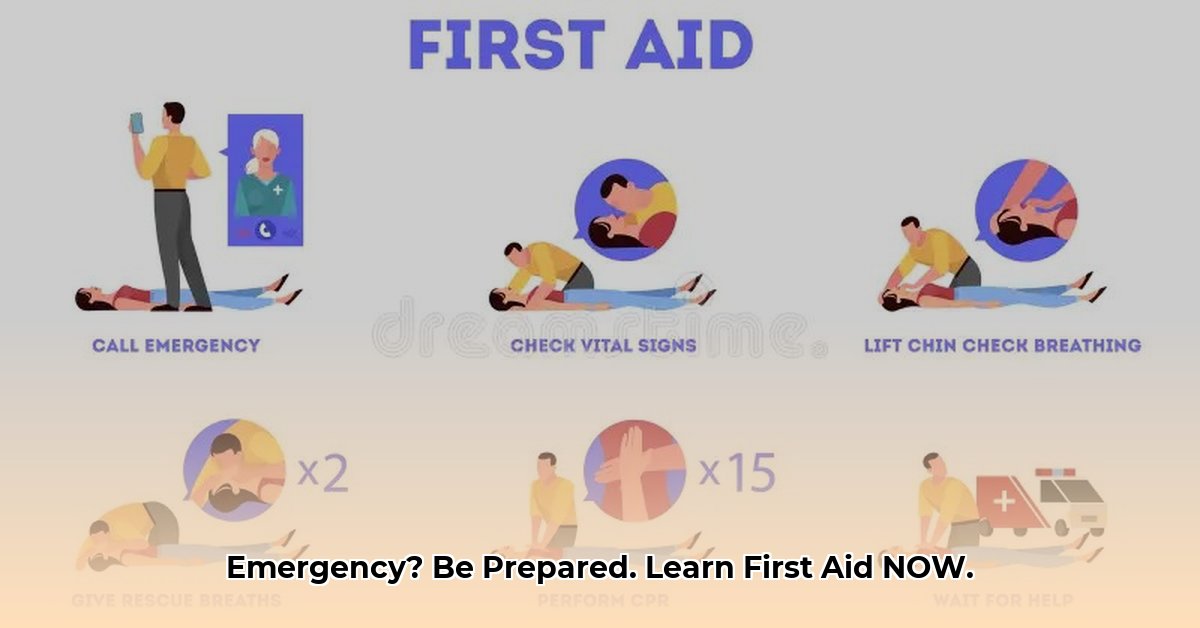This guide equips you with the knowledge to handle various medical emergencies, from severe bleeding and choking to burns, fractures, and more. We’ll guide you through each step clearly, empowering you to act quickly and confidently until professional help arrives.
Essential First Aid Steps
Knowing what to do in a crisis can save lives. This guide breaks down essential first aid steps, empowering you to act quickly and effectively.
Assessing the Scene and the Victim
- Ensure Your Safety: Before approaching, assess the scene for dangers (traffic, fire, downed power lines). Your safety is paramount.
- Check Responsiveness: Approach cautiously and check if the person is responsive—awake, talking, or reacting to touch.
- Check Breathing: Observe their breathing—normal, shallow, labored, or absent.
- Check Circulation: Feel for a pulse.
Calling for Help and Providing Basic Life Support
- Call 911 (or your local emergency number): In serious emergencies, call immediately. Provide clear information about the location, situation, and victim’s condition.
- Open the Airway (if unresponsive and not breathing): Carefully tilt the head back and lift the chin.
- Rescue Breaths (if not breathing): Pinch their nose, seal your mouth over theirs, and give two gentle breaths. Watch for chest rise.
- CPR (if no pulse): Place hands on the center of the chest and perform compressions at a rate of 100-120 per minute.
Specific Injury and Illness Management
Bleeding
- Direct Pressure: Apply firm pressure to the wound with a clean cloth or bandage.
- Elevation: If possible, raise the injured area above heart level.
Choking
- Heimlich Maneuver (adults/children): Stand behind, wrap arms around the waist, and perform quick, upward thrusts below the ribcage.
- Back Blows/Chest Thrusts (infants): Alternate between back blows and chest thrusts.
Burns
- Cool Water: Run cool (not cold) water over the burn for 10-20 minutes. Avoid ice.
- Loose Sterile Dressing: Cover loosely with a sterile dressing.
Heart Attack
- Call 911: Recognize signs (chest pain, shortness of breath, arm/jaw discomfort, nausea) and call immediately.
- Rest and Aspirin (if directed by a medical professional): Help them rest comfortably. Aspirin may be beneficial if they can swallow and aren’t allergic, but always consult with a medical professional or 911 dispatcher first.
Stroke
- FAST: Recognize signs (Face drooping, Arm weakness, Speech difficulty, Time to call 911).
Seizures
- Protect from Injury: Move nearby objects to prevent harm.
- Recovery Position: Turn them on their side to prevent choking.
- Call 911: If the seizure lasts longer than five minutes, is recurrent, or if the person is injured, pregnant, or has diabetes. Current research continues to refine seizure management protocols.
Fractures
- Immobilization: Keep the fractured area still. Create a splint if possible and safe to do so.
- Medical Attention: Seek professional medical care.
Building Your First Aid Kit
A well-stocked first aid kit is essential for handling emergencies. Consider including the following:
| Item | Description |
|---|---|
| Bandages | Assorted sizes |
| Gauze Pads | For cleaning and covering larger wounds |
| Antiseptic Wipes | For disinfecting |
| Medical Tape | To secure bandages and dressings |
| Gloves | Essential for your protection |
| Tourniquet | For severe bleeding (with proper training) |
| Pain Relievers | Over-the-counter options (ibuprofen, acetaminophen) |
| Scissors | For cutting bandages or clothing |
| Tweezers | For removing splinters |
| CPR Face Shield | For safe rescue breaths |
| First Aid Manual | A handy reference guide |
Additional Tips for Emergency Preparedness
- First Aid Training: Taking a certified first aid and CPR course will significantly boost your confidence and ability to respond effectively. The American Red Cross and the National Safety Council offer excellent courses.
- Emergency Contacts: Keep a list of emergency contacts readily available.
- Medications: Note any allergies or medical conditions the person may have.
- Regularly Check and Restock: Ensure your first aid kit is complete and up-to-date. Medications can expire, so replace them as needed.
- Location Awareness: Be aware of your surroundings and potential hazards.
- Stay Calm: In stressful situations, staying calm is crucial for clear thinking and effective action.
Disclaimer: This guide provides general information and does not substitute professional medical advice. Always consult a healthcare professional for any health concerns. Seek immediate medical assistance for emergencies. First aid practices and research are constantly evolving. Stay updated with the latest recommendations from reputable organizations like the American Red Cross and the Mayo Clinic.
- Healthy Bento Lunch Ideas for Adults to Enjoy Lunch Again - December 22, 2025
- Glass Lunch Box Containers Offer Healthy, Leak-Proof Meal Prep - December 21, 2025
- Glass Bento Boxes Offer a Healthy, Eco-Friendly Lunch Solution - December 20, 2025










